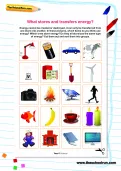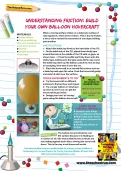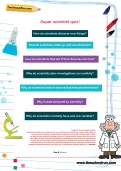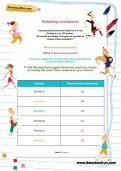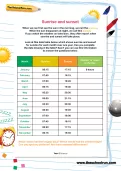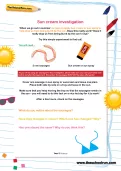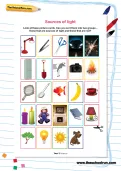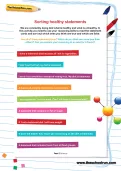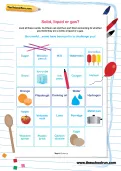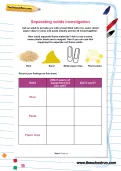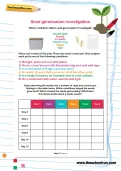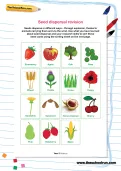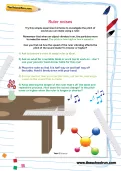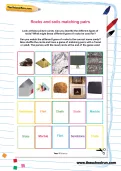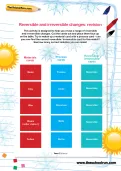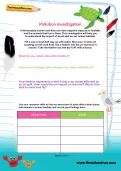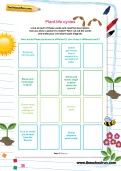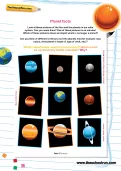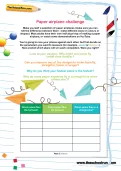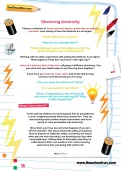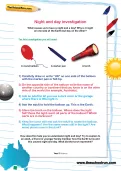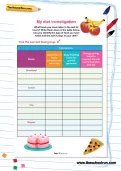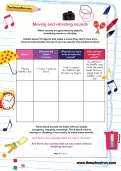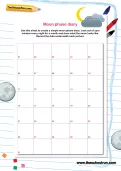Ks2 Science worksheets
Free worksheets: Science, KS2, Y6
You’ll need to login or Register first to access these worksheets for free.
Once you’ve tried out our free worksheets, why not explore all our resources (1000s of worksheets, interactive tutorials, learning packs and more) with a 14-day FREE trial subscription.
What stores and transfers energy?
Energy cannot be created or destroyed, it can only be transferred from one store into another. In these pictures, which items do you think use energy? Which ones store energy? Do they all store/use the same type of energy? Cut them out and sort them into groups.
Understanding friction: Build your own balloon hovercraft
When a moving surface slides on a stationary surface it rubs against it, which slows it down. This is due to friction, a force which resists the movement of one object sliding past another. Understand more about friction with a fantastic practical project: make your own balloon hovercraft!
Super scientist quiz
Quiz questions to encourage your child to think about how scientists work and why they do the things they do.
Reaching conclusions
A worksheet showing results of an experiment with questions underneath to consider.
Sunrise and sunset
When we can first see the sun in the morning, we call this sunrise. When the sun disappears at night, we call this sunset. If you watch the weather on television, they often report when sunrise and sunset will take place. Look at this data table below which shows sunrise and sunset for London for each month over one year. Can you complete the data missing in the table? See if you can use this information to answer the questions below.
Sun cream investigation
When we go out in summer we have to apply sun cream or sun spray to help stop us from being burnt by the sun. Does this really work? Does it really stop us from being burnt by the sun’s rays? Try this simple experiment to find out!
Sources of light
Look at these picture cards. Can you sort them into two groups – those that are sources of light and those that are not?
Sorting healthy statements
We are constantly being told what is healthy and what is unhealthy. In this activity you need to use your reasoning skills to read the statement cards and sort out which ones you think are true and which are false.
Solid, liquid or gas?
Look at these cards. Cut them out and then sort them according to whether you think they are a solid, a liquid or a gas. Be careful…some have been put in to challenge you!
Separating solids investigation
Ask an adult to provide you with a bowl filled with rice, sand, metal paper clips (or pins) and pasta (ideally penne) all mixed together. How could separate these materials? Ask to use a sieve, some plastic bowls and a magnet. See if you can use this equipment to separate out these solids.
Seed germination investigation
Let's investigate which conditions affect seed germination!
Seed dispersal revision
Seeds disperse in different ways – through explosion, thanks to animals carrying them and via the wind. Use what you have learned about seed dispersal and your research skills to sort these
seed cards using the sorting sheet on the next page.
seed cards using the sorting sheet on the next page.
Ruler noises
Try this simple experiment at home to investigate the pitch of sound you can make using a ruler.
Rocks and soils matching pairs
Look at these picture cards. Can you identify the different types of rocks? What might these different types of rocks be used for? Can you match the different types of rocks to the correct name cards? Now shuffle the cards and have a game of matching pairs with a friend or adult. The person with the most cards at the end of the game wins!
Reversible and irreversible changes: revision
This activity is designed to help you revise a range of reversible and irreversible changes. Cut the cards out and place them face up on the table. Try to match up a material card with a process card – can you now find the correct reversible / irreversible card for this match? See how many correct matches you can make!
Pollution investigation
Unfortunately human activities can have negative impacts on habitats and the animals that live in them. This investigation will help you to understand the impact of an oil spill on our ocean habitats.
Plant life cycles
Look at each of these cards and read the description. Can you draw a picture to match? Now cut out the cards and make your own plant cycle diagram. How would these pictures be different if you chose a different plant?
Planet facts
Look at these pictures of the Sun and the planets in our solar system. Can you name them? One of these pictures is an intruder! Which of these pictures shows an object which is no longer a planet? Can you think of different criteria to sort the planets into (for example: size, colour, what planet is made of, type of orbit, etc.)?
Paper airplane challenge
Make yourself a selection of paper airplanes. You’re going to race your planes against each other, but first decide on the parameters you want to measure (for example, speed or distance). Now predict which plane will win each completion. Were you right?
Observing electricity
Choose a selection of small electrical objects, preferably two-battery operated. Look closely at how the batteries are arranged. Open up a plug and look at the wires, all going in different directions. Can you work with your adult helper to put the plug back together? If you have an electricity meter clock, look at the dial turning and how much electricity you are using.
Night and day investigation
What causes us to have a night and a day? Why is it night on one side of the Earth but day on the other? Let's investigate!
My diet investigation
What foods you have eaten in the last 24 hours? Write them down in the table below. Can you identify the type of food you have eaten and the role it plays in your diet?
Moving and vibrating sounds
When sounds are generated by objects, something moves or vibrates. Collect about 10 objects that make a noise (they don’t have to be musical instruments) and see if you can answer these questions.
Moon phase diary
Use this sheet to create a simple moon phase diary. Look out of your window every night for a month and draw what the moon looks like. Record the date underneath each picture.
